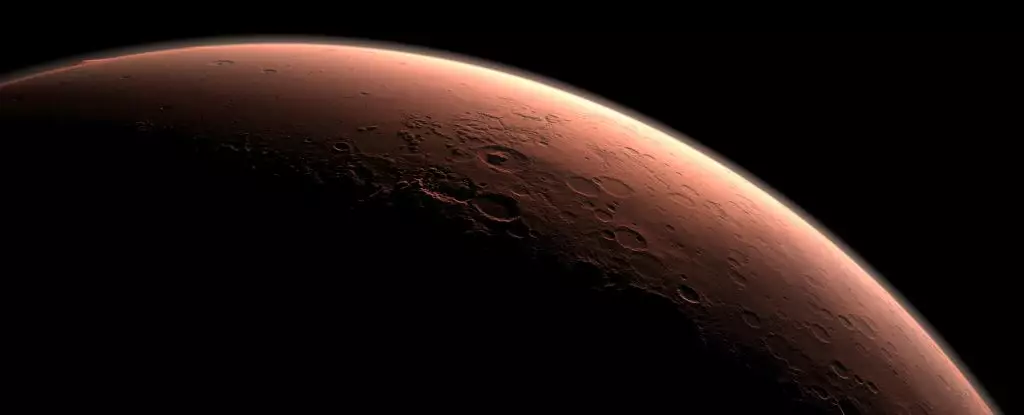The allure of Mars, the enigmatic red planet, has captivated scientists and dreamers alike for centuries. Despite numerous explorations, the quest to uncover evidence of life on Martian soil remains an elusive endeavor. The Viking missions in the 1970s marked a historical milestone in our search for extraterrestrial life. As the first U.S. missions to land on Mars, the Viking landers conducted groundbreaking experiments aimed at identifying signs of biology. However, recent analyses reveal that our methods may have unintentionally thwarted our efforts. This article explores the implications of these findings and calls for a more nuanced approach in future Martian explorations.
In 1976, the Viking landers touched down on Martian terrain, initiating a series of experiments designed to probe the atmospheric and soil samples for biosignatures—indicators of potential life. Researchers aimed to detect molecules that could be remnants of biological activity. Among the experiments employed, the gas chromatograph-mass spectrometer (GCMS) revealed the presence of chlorinated organics. Initially dismissed as contamination from Earth, these findings are now understood to be native to Mars. The question, however, remains: are these substances born of biological processes, or are they purely abiotic?
Recent speculation hints at a more complex reality. The thermal requirements of the GCMS meant that samples were subjected to high temperatures, potentially eradicating any organic molecules that could have indicated life. In fact, Dirk Schulze-Makuch, an astrobiologist at the Technical University of Berlin, argues that the very experiments designed to elucidate evidence of life may have inadvertently destroyed it.
Schulze-Makuch emphasizes the need for a fundamental reevaluation of experimental strategies employed in previous missions. The assumptions made about Martian life, primarily influenced by Earth’s water-dependent organisms, colored the design of the Viking experiments. Water was regarded as a universal requirement for all forms of life, leading researchers to pour water over Martian samples to stimulate potential microbial activity. Yet, in hindsight, this approach was misguided.
Mars’s harsh, arid climate has forced any native life forms to adapt in ways vastly different from those on Earth. The historical emphasis on liquid water may have hindered our understanding of how life can survive in extreme dryness. Schulze-Makuch draws analogies to illustrate this point: envision an individual in a desert, desperately in need of hydration, suddenly being thrust into the depths of an ocean. Overwhelmed by the overflowing liquid, they would be unable to survive the inundation. This metaphor underscores the possibility that the introduction of water during Viking’s experiments might have suffocated life forms adapted to desiccated conditions.
The apparent contradictions in the results from the Viking projects further complicate matters. While the pyrolytic release experiment indicated some hints of microbial activity under dry conditions, the gas exchange experiment yielded contradictory outcomes. These perplexing results suggest that there may have been signs of life that were, regrettably, disregarded or misinterpreted.
Schulze-Makuch’s hypothesis, introduced in 2007, proposes that Martian life may be uniquely adapted to desiccation, potentially incorporating substances like hydrogen peroxide in their metabolic processes. The anomalous yet intriguing results of the Viking experiments align with this theory, opening the door for renewed considerations about the nature of life on Mars.
In light of these revelations, the imperative becomes clear: future missions to Mars must be crafted with deliberate caution and sensitivity to the planet’s unique ecological niche. Schulze-Makuch advocates for the dispatch of another mission, singularly focused on the search for life, with a keen awareness of past methodologies that may have inadvertently obstructed our explorations.
As we prepare for the next phase in our quest to explore Mars, the experiences of the Viking missions serve as a reminder of the many obstacles that lie ahead. The need to balance curiosity with caution has never been more pronounced. Ensuring that our future exploratory ventures are attuned to the realities of Martian conditions could yield invaluable insights into the nature of life, both on Mars and beyond.
Though we have yet to solidify evidence of life on Mars, the data gleaned from past missions—particularly Viking—teaches us lessons about adaptation, resilience, and the significance of context in our search. As we invest our resources and intellect into future missions, we stand on the precipice of discovery, mindful that the past may hold the keys to understanding our universe. With renewed dedication and refined methodologies, the possibility of uncovering Martian life could transform from a long-held dream into an exhilarating reality.

Leave a Reply